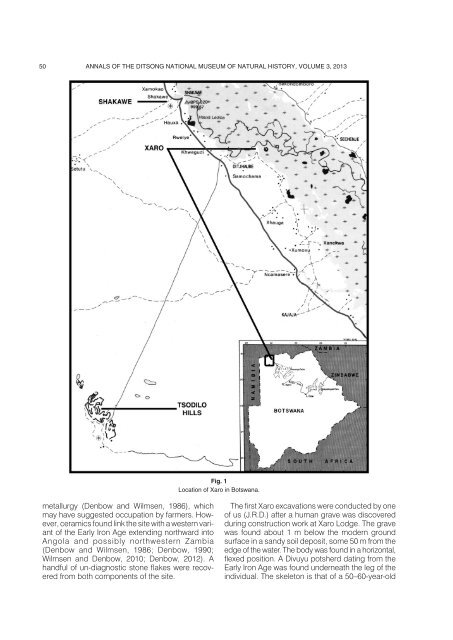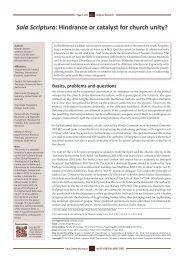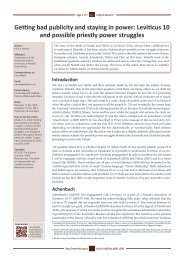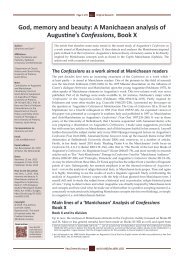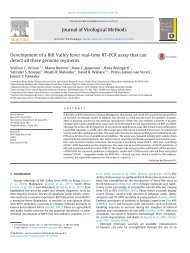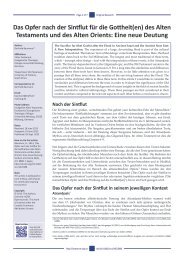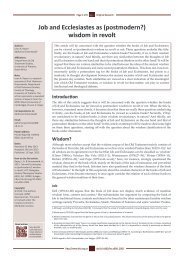View/Open - University of Pretoria
View/Open - University of Pretoria
View/Open - University of Pretoria
Create successful ePaper yourself
Turn your PDF publications into a flip-book with our unique Google optimized e-Paper software.
50 ANNALS OF THE DITSONG NATIONAL MUSEUM OF NATURAL HISTORY, VOLUME 3, 2013<br />
Fig. 1<br />
Location <strong>of</strong> Xaro in Botswana.<br />
metallurgy (Denbow and Wilmsen, 1986), which<br />
may have suggested occupation by farmers. However,<br />
ceramics found link the site with a western variant<br />
<strong>of</strong> the Early Iron Age extending northward into<br />
Angola and possibly northwestern Zambia<br />
(Denbow and Wilmsen, 1986; Denbow, 1990;<br />
Wilmsen and Denbow, 2010; Denbow, 2012). A<br />
handful <strong>of</strong> un-diagnostic stone flakes were recovered<br />
from both components <strong>of</strong> the site.<br />
The first Xaro excavations were conducted by one<br />
<strong>of</strong> us (J.R.D.) after a human grave was discovered<br />
during construction work at Xaro Lodge. The grave<br />
was found about 1 m below the modern ground<br />
surface in a sandy soil deposit, some 50 m from the<br />
edge <strong>of</strong> the water. The body was found in a horizontal,<br />
flexed position. A Divuyu potsherd dating from the<br />
Early Iron Age was found underneath the leg <strong>of</strong> the<br />
individual. The skeleton is that <strong>of</strong> a 50–60-year-old


